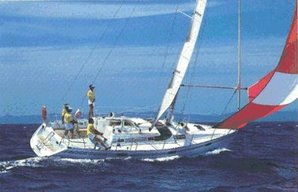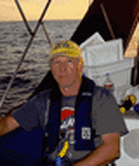
An experienced skipper and two novice crew agreed to deliver a Beneteau Oceanis 390 yacht. Ocean Madam, from Malta to Plymouth, United Kingdom. Before sailing, the crew were informed the voyage would last four to six weeks. The yacht sailed from Malta on 22 September 1997 and headed towards Gibraltar where it arrived on 2 October. This leg included one refueling stop in a Spanish port.
After 36 hours in Gibraltar Ocean Madam resumed her voyage with the intention of making a non-stop passage to Plymouth. In the event the plan was changed and a diversion was made to La Coruna to refuel on 7 October. During the short stopover the skipper became aware that force 7-8 winds were forecast for the Bay of Biscay. Confident in his ability to handle adverse weather conditions he chose to sail and once underway, began to pick up the BBC shipping forecasts which were predicting force 9 winds. Within 24 hours Ocean Madam was encountering high winds and correspondingly rough seas with breaking waves.
On the evening of 8 October, Ocean Madam was knocked down twice by breaking waves. She recovered after the first knock-down but inverted after the second. While in this position one of the crew became detached from the yacht despite being securely clipped on by his safety harness. Faced with a dismasted and partially flooded craft in a high sea state
and in the dark, the two survivors were severely handicapped by the circumstances in what they could do. They were without power and were confronted with a flailing liferaft but could hear the cries of the man overboard. Controlling the inflated liferaft became their first priority and both men climbed into it to secure it. Before they were able to do so,
another sea struck them and broke the painter. The liferaft was swept away and any chance of rescuing their colleague had gone.
Alerted by the transmissions of the EPIRB a French search and rescue operation was successful, and after spending eight hours in the damaged liferaft, the two survivors were rescued by a French naval helicopter. The capsize was caused by breaking waves. Prior to the second knock-down the crew member who lost his life was wearing a lifejacket and a safety harness which was properly clipped on. Although it will never be determined exactly what happened, it is probable he
unclipped himself whilst underwater but was unable to return to the boat once it had righted. He was never found and is presumed drowned.
The report makes four recommendations:
- Remind offshore yachtsmen to ensure washboards are in place whenever bad weather is forecast or encountered, and that they are properly secured to prevent them being lost in the event of a knock-down;
- Inform all small craft owners and skippers to register their EPIRBs with the Maritime and Coastguard Agency and ensure that any changes are kept up to date;
- Remind all holders of commercially endorsed certificates of competence such as Yachtmaster Offshore and Ocean of their responsibility to ensure that vessels on long charter or delivery trips have sufficiently qualified and experienced people on board to undertake the proposed long voyage;
- Alert yachtsmen to the fundamentals of yacht stability so that owners and skippers are better informed to make judgements regarding the suitability of their craft for given weather and sea conditions.
The full report can be downloaded below:
| beneteau390_capsize.pdf |

 RSS Feed
RSS Feed
